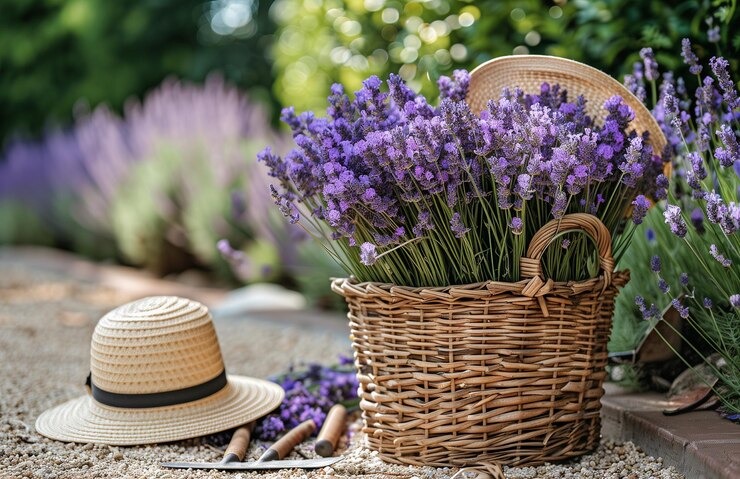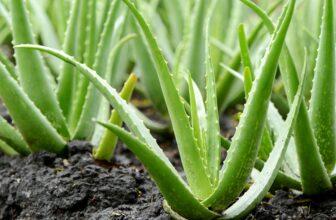What is Snake Plant?
Snake plant has distinct sword-like leaves that grow upright, resembling artificial foliage.
Botanical name of Snake plant is Sansevieria Trifasciata while other common names are Mother-in-law’s tongue, African Bowstring Hemp, Snake Plant, Spear Plant, Good Luck Plant, Viper’s Bowstring Hemp. Dwarf Sansevieria snake plant is often called Bird’s Nest Sansevieria.
Explore our online nursery for a diverse range of Snake Plants, perfect for adding style and greenery to your indoor spaces.
Snake Plant (Sansevieria) has several qualities that make it ideal for home gardens and indoor environments:
Why you should grow snake plant in your garden/What Makes The Snake Plant Ideal For Home Garden?
Air Purification
Snake plants are renowned for their air-purifying abilities. They can effectively remove toxins from the air, enhancing indoor air quality. They are considered one of the top air-purifying plants for indoor environments.
Versatility
Snake plants are versatile and can thrive in a variety of conditions. They are hardy and resilient, able to withstand low-light conditions, require minimal watering, and can adapt to dry environments. This adaptability makes them suitable for both indoor and outdoor settings.
Easy to Propagate
Propagating snake plants is relatively simple, and many species of snake plants can be easily propagated, making them a good choice for those interested in expanding their plant collection.
Low Maintenance
Snake plants are often referred to as “closet plants” because they require minimal care. They can thrive with infrequent attention, making them an excellent choice for novice indoor gardeners.
Durability
The durability of snake plants makes them suitable for apartments and spaces with limited lighting, where other houseplants might struggle to thrive.
Aesthetic Appeal
Snake plants are visually appealing with their upright growth, evergreen appearance, and intricate leaf patterns. They can enhance the aesthetics of various indoor spaces, from offices to hallways and bathrooms.
Adaptability to Humidity:
Snake plants can grow in a wide range of humid conditions. They can do well in both humid environments, such as bathrooms, and drier conditions, like offices. Proper watering and drainage management are key to their success in different humidity levels.
Types of Snake Plant
There 75 species of (Sansevieria / snake plant). Some best known types for your garden are listed here.
Cylinder Snake Plant:

It produces hard and round leaves that can attain the height of several feet. Leaves form central crown.
Bird’s Nest Snake Plant:

Also known as ‘Hahnii’. Leaves form a cup like structure that look like bird’s nest. Leaves attain the height only 6 inches that make it ideal to place it on tables.
‘Laurentii’:

It is a most popular variety . Leaves have creamy yellow margins. Large plant measures can be 24–36 inches tall.
Variegated Snake Plant:

It is cultivated for its striking upright growth pattern, featuring leaves that are 2 to 4 inches wide and several feet in length. This plant is highly regarded as an excellent choice for environments with limited access to natural light.
Bantel’s Sensation:

This particular variety displays slender leaves adorned with white stripes, reaching a length of approximately 3 feet. The faint white border running along its narrow leaves adds a distinctive and eye-catching element to its appearance. Due to its relative rarity in the market, it is a suitable selection for indoor cultivation.
‘Golden Hahnii’:

It is Like the ‘Bird’s Nest,’ but with leaves variegated along the edge in yellow.
Starfish Snake Plant:

The starfish snake plant, also referred to as the Pangane Sansevieria, is recognized for its cylindrical leaves that radiate from its base, creating a resemblance to a starfish. This variety enjoys widespread popularity among indoor plant enthusiasts. Its dark green leaves are adorned with distinctive fluorescent green patterns, adding to its appeal.
Whale Fin:

These fascinating snake plants boast broad, wide leaves that bear a striking resemblance to a whale’s fin emerging from the water’s surface. They feature paddle-like leaves with mottled green foliage streaked with pale, creamy yellow. This plant thrives in environments with low to bright, indirect light.
This particular cultivar is sometimes grown individually, much like the sweetheart hoya, which may sound unremarkable at first. However, once you see it, its allure becomes evident. Indoors, the leaves can reach heights of about three feet.
Each rhizome typically produces only one or two leaves, but as these rhizomes extend, new offshoots emerge nearby. The plant’s size and spread can potentially become even more expansive.
‘Blue Sansevieria/Sansevieria Ehrenbergii:

Contrary to its name, the Blue Sansevieria doesn’t actually exhibit a blue hue; instead, its green leaves possess a subtle coppery tint. This plant showcases a distinctive growth pattern, with its leaves neatly stacked atop one another.
Sansevieria francisii

Originating from Kenya, this variety features a trunk-like appearance, with leaves that arch upward and range in color from dark green to light green. These leaves can reach heights of 8 to 12 inches. Additionally, the plant tends to produce runners with numerous offsets, contributing to its robust growth.
Sansevieria Cylindrica ‘Boncel’

This hybrid version of Sansevieria cylindrica presents fan-shaped leaves in a light green hue, adorned with dark green concentric circles that run from the top to the bottom of the leaves.
Banana/Samurai Dwarf

Occasionally referred to as ‘Samurai,’ ‘Samurai Dwarf,’ or ‘Blue,’ the ‘Banana’ is succulent and compact plant.
Its leaves are short, sturdy, and possess a waxy and glossy texture. They typically display a rich emerald green color. This particular cultivar typically reaches a mature height of no more than 3-4 inches.
Benefits of Snake Plant
Toxin Removal/Purifier: NASA has considered snake plants as a potential natural method to purify the air in space stations and tested their ability to remove harmful substances.
Oxygen Factory: Snake plants are hardy and can grow in extreme heat and drought conditions. They have a unique breathing system, with their pores opening at night, allowing them to produce oxygen around the clock. While it may not be sufficient to completely replace the need for fresh air, it does contribute to improved indoor air quality.
Dust Filter: The plant’s large, wide leaves effectively trap and collect dust in the center of their leaf bundle. This can be particularly helpful in urban environments where dust is prevalent.
CO2 Cleaner: In addition to oxygen production, snake plants continuously consume carbon dioxide (CO2), making them beneficial for air quality.
Anti-Allergen: Snake plants filter out formaldehyde, which is an allergen, contributing to a more allergy-friendly environment.
Pest Resistant: Due to their minimal water requirements and robust leaves, snake plants are resistant to many pests. While they can be susceptible to spider mites and mealybugs if introduced from another plant, most pests tend to avoid them.
Anti-Cancer Plant: Snake plants play a role in reducing the presence of cancer-causing agents like toluene, xylene, benzene, and formaldehyde in the environment, which makes them effective in promoting a healthier indoor atmosphere.
How to grow snake plants
1. Planting Time: The best time to plant snake plants is in the spring.
2. Light: Snake plants can tolerate low light conditions but grow best with 8 to 10 hours of indirect sunlight or a few hours of early-morning direct sunlight. Excessive direct sun can harm the plant and its leaves. While they can endure some shade, insufficient light may slow growth and reduce the plant’s vibrancy.
3. Soil: Snake plants thrive in a well-drained potting mix. A sandier, all-purpose cactus potting soil is a suitable choice. Avoid soil mixes with high peat content, as they can retain too much water.
4. Water: Water your snake plant when the soil has completely dried out, and then water it deeply. In the winter, check the soil every few weeks, as the plant may only need watering about once a month. If the leaves become dry and brittle, water immediately. During the active growth period in spring and summer, watering every two weeks is generally sufficient. Overwatering should be avoided, as it can lead to root rot. Yellowing leaves are an early sign of overwatering.
5. Temperature and Humidity: Snake plants thrive in temperatures between 70°F and 90°F and should be kept away from cold drafts. They are sensitive to frost, and extended exposure to temperatures below 50°F can be fatal. They adapt well to average household humidity levels, typically between 30% and 50%.
6. Fertilizer: Feed your snake plant once in spring and once in mid-summer with a balanced fertilizer. Avoid fertilizing during the winter.
How we can propagate the snake plant
Propagating Snake Plant by Division:
- Gather a sharp, clean knife, a clean pot, and potting soil designed for cacti and succulents.
- Remove the snake plant from its pot and place it on a flat surface. Gently remove excess soil from the plant.
- Use the knife to divide the plant into sections, ensuring that each section has its roots intact.
- Replant these sections into clean pots filled with the recommended potting soil.
- Water the newly potted sections and place them in a partially sunny location.
If your snake plant has offshoots or pups (baby plants emerging from the soil), you can follow the same procedure for root division to separate and replant each pup in its own pot.
Propagating Snake Plant from Leaf Cuttings:
- Use a sterile cutting tool to remove a healthy leaf from the base of the snake plant.
- Submerge the cut end of the leaf in a clean jar of water and place the jar in a partially sunny location. Alternatively, allow the cut end to callous over for 24 hours and then plant it, cut-end down, in a pot.
- If you choose the water-rooting method, refresh the water in the jar every two weeks.
- Roots will develop in one to four months. Once the roots reach a length of about one inch, plant the cutting in a cactus potting mix.
- Water the newly potted cutting and place it in an area with bright, indirect light.
How to bloom snake plant
Regarding getting a snake plant to bloom, it can be challenging for indoor-grown snake plants to flower. However, providing ample sunlight and allowing the plant to become slightly root-bound can encourage blooming. Note that not all snake plant varieties will produce flowers. When they do, the flowers are typically delicate, creamy-white, tubular, and fragrant, resembling lilies, and they tend to bloom at night. If you desire a flowering snake plant, it’s important to select a cultivar known for its blooming characteristics.
Type of Pot you need for snake plant
Consider the following points while choosing pot for snake plant
Proportional Size: The size of the pot should be proportional to the size of the plant. Snake plants don’t require very large pots, but they should have enough room for their roots to spread comfortably. A good rule of thumb is to use a pot that’s about one-third larger than the root ball.
Drainage: Snake plants prefer wide, shallow pots with ample drainage holes. Proper drainage is essential to prevent overwatering and root rot. Choose a pot made of ceramic, terracotta, or clay, as these materials allow excess moisture to evaporate. Strong roots can crack plastic pots.
Pot Material Selection: The choice of pot material depends on environmental conditions. Ceramic pots are suitable when humidity is high and temperatures are low because they facilitate soil absorption of moisture from the surroundings. In contrast, plastic pots are better for low humidity and excessive heat, as they help retain moisture and prevent rapid soil drying.
Room for Growth: Snake plants need some room to grow and expand. They have rhizomes that spread horizontally rather than deep roots. The pot should allow the plant to expand comfortably without being excessively deep, as overly deep pots can hinder drainage and lead to water accumulation.
Repotting: As snake plants have a slow growth rate, they don’t need very large pots right away. A medium-sized pot that accommodates the roots is suitable. If you have a mature, large snake plant, you can consider repotting it in a container that is one to two times larger than its original pot.
Consider the Type: The choice of pot size may also depend on the specific variety of snake plant you have, as there are dwarf varieties and larger ones. Select a pot size that suits the specific characteristics of your plant.
Decorating your home with snake plants
Decorating your home with snake plants can be a delightful and versatile endeavor. Here are some ideas and considerations for incorporating these plants into your interior decor:
Architectural Elegance: The tall, striking leaves of snake plants make them ideal for adding an architectural touch to your living space. Consider placing them in corners of your home or office to create a visually appealing focal point.
Variety of Options: Snake plants come in various sizes and shapes. Smaller varieties like cylindrical or bird’s nest snake plants are suitable for decorating office desks or areas with lower light conditions. Larger varieties can be placed in corners or open spaces.
Versatile Decor: Snake plants are known for their spectacular foliage, which complements a wide range of interior decor styles. Whether your decor is modern, traditional, or eclectic, snake plants can fit right in.
Easy Maintenance: Snake plants are low-maintenance, making them ideal for various home decor applications. They are forgiving and can thrive in different light conditions.
Entrance : According to Feng Shui principles, placing snake plants at the entrance of your home can help protect it from negative energy, improve the overall environment, and even attract wealth. These plants are believed to cleanse and purify the energy of your space.
Dracaena Trifasciata Varieties: Snake plants, also known as Dracaena trifasciata, offer a wide range of options, including various sizes and leaf patterns. This diversity allows you to choose the perfect snake plant for your specific decor needs.
Strategic Placement: Consider the purpose and atmosphere of each room when placing snake plants. Smaller varieties work well on office desks, kitchen counters, or side tables, while taller species can be strategically placed in corners, hallways, or as room dividers.
Complementing Colors: The vibrant dark green colors of snake plant foliage can complement your decor’s color scheme and add a touch of natural beauty to your space.
How snake plant is good for human health
Snake plants, also known as Sansevieria, offer a range of benefits beyond their aesthetic appeal. Here are some important points to consider regarding their potential health and well-being advantages:
Air-Purifying Qualities: Snake plants are excellent air purifiers and can remove certain toxins from the air, including toluene, benzene, xylene, trichloroethylene, and formaldehyde. This air-purifying capability can help improve indoor air quality and reduce the presence of cancer-causing pollutants, making them an effective anti-cancer plant.
NASA’s Clean Air Study: In 1989, NASA conducted a clean air study to evaluate the ability of plants, including snake plants, to filter chemicals from the air. The study found that snake plants were effective in removing volatile organic chemicals (VOCs) like benzene, trichloroethylene, and formaldehyde from the air. This study highlights the plant’s air-purifying capabilities.
Potential Medicinal Uses: While not scientifically proven, snake plants have been traditionally believed to have various medicinal uses, including wound healing, burn treatment, reducing inflammation, strengthening the immune system, combating parasites, supporting healthy blood pressure, and relieving headaches. However, it’s essential to exercise caution when using snake plants for medicinal purposes, as the sap from their leaves can be toxic in larger doses.
Mood Enhancement: Snake plants can contribute to improved mental health by increasing the flow of oxygen in indoor spaces. The added oxygen can help boost mood and reduce stress levels. Horticultural therapy, which involves interacting with plants and gardens, is recognized for its positive impact on mental health and is used in various therapeutic contexts.
Common Problems With Snake Plant and its Solutions
When to Repot: Repot your snake plant when the roots become overcrowded, or the plant outgrows its current pot. This is typically needed every few years. Choose a container that is about two inches wider than the current one. The best time to repot is in the spring, and when you do, place the plant at the same level as it was in the original pot.
Overwintering: Snake plants are sensitive to temperatures below 50°F. If you are growing the plant outdoors, bring it indoors during cold weather and place it in a warm location protected from drafts. During the winter months, reduce watering and allow the soil to dry out completely before watering again.
Common Pests: Snake plants can be susceptible to common houseplant pests, including scales, gnats, spider mites, aphids, mealybugs, and whiteflies. Most of these can be removed by hand or with a gentle spray of water. If infestations persist, treat them with neem oil.
Overwatering Issues: Most problems with snake plants are related to overwatering, which can lead to fungal infections and root rot. To avoid this, maintain a proper watering schedule and only water when the soil is dry.
Foul-Smelling Soil: If the soil develops a foul odor, it may be a sign of root rot. Remove the plant from its pot and inspect the roots. Cut away any brown, mushy roots and leaves, and then repot the healthy portion of the rhizome.
Yellow or Brown Leaves: Yellow or brown leaves on a snake plant can indicate overwatering, the presence of pests, or root rot. Prevent these issues by following a proper watering schedule and only watering when the soil is dry.
Curling Leaves: Curling leaves can be caused by pests like thrips. Cut away severely affected leaves and use neem oil to deter these tiny pests.
Leaves Falling Over or Drooping: Healthy snake plant leaves should grow upright. If the leaves are falling over or drooping, it may be due to too much water, insufficient light, or poor potting material. Address these issues by moving the plant to a brighter location, reducing watering frequency, and using well-draining soil.
Can Snake Plant survive in low light
Ideal Light Conditions: Snake plants thrive when they receive plenty of bright, indirect light, along with a few hours of direct sunlight each day. They are adaptable and can tolerate lower light conditions, making them suitable for a variety of settings.
Adaptability to Low Light: Snake plants are known for their ability to survive in low-light environments. While they may not grow as quickly or robustly in dim light, they can still survive and remain healthy.
Low-Light Suitability: Sansevieria trifasciata is an excellent choice for low-light areas due to its ability to adapt and thrive in such conditions.
Direct Light Tolerance: Snake plants are more tolerant of direct light compared to many other houseplants. However, they can still be susceptible to burning if they receive more than 5 or 6 hours of direct sunlight per day.
Positioning: An ideal location for a snake plant is in a south-facing room with abundant natural light, but it’s essential not to place it directly on a windowsill.
Light Testing: To determine if the light is adequate for your snake plant, you can perform a simple test. Hold your hand between the light source and a piece of paper. If the shadow is faint, extremely blurry, and lacks distinct edges even during midday, the light in that location is likely too dim for the snake plant to thrive. In contrast, if the shadow is dark with clear, sharp edges, the light is considered bright and direct.
Plant Colour in low light: ndeed, snake plants (Sansevieria) can adapt to low-light conditions by producing more chlorophyll, resulting in darker green foliage. This adaptation is a survival strategy to maximize photosynthesis in environments with limited light. While the coloration may change in low-light settings, the plant remains healthy and continues to thrive by making the most of the available light. Keep in mind that this natural response is a testament to the snake plant’s resilience and adaptability in various lighting situations.
The Best Snake Plants for Dim Light
If you want to place a Snake Plant in a poorly lit spot, try darker cultivars
- Ceylon Bowstring Hemp,
- Black Gold. T
- Starfish.
- Blue Sansevieria
If Your Cat Eats a Snake Plant:
Remove the Plant: If you catch your cat ingesting a snake plant, remove the plant from their vicinity to prevent further consumption.
Keep a Close Eye on Your Cat: Monitor your cat for any unusual behavior or symptoms of toxicity, which may include vomiting, diarrhea, loss of appetite, weakness, drooling, increased heart rate, oral irritation, pale gums, and increased thirst.
Contact Your Veterinarian: If you observe any concerning symptoms or suspect that your cat has ingested a significant amount of the plant, contact your veterinarian immediately. Provide them with details about the situation and your cat’s condition.
Preventing Snake Plant Toxicity in Cats:
Placement: Consider placing snake plants in areas that are inaccessible to your cat. Elevate the plants or use hanging planters to keep them out of reach.
Cat-Safe Houseplants: To ensure a feline-friendly environment, opt for houseplants that are non-toxic to cats. There are numerous cat-safe plant options available that can bring greenery into your home without posing a risk to your pets.
Symptoms of Snake Plant Toxicity in Pets
- Vomiting
- Diarrhea
- Loss of appetite
- Weakness
- Drooling
- Increased heart rate
- Oral irritation
- Pale gums
- Increased thirst
Conclusion
Because of low maintenance and excellent air purifier snake plants is a popular and valuable addition to indoor spaces, as they not only add to the aesthetics but also contribute to a cleaner and healthier living environment.
With a variety of snake plant options and the flexibility to place them in different locations, these plants can enhance the aesthetics of your home while also contributing to a healthier indoor environment.
Incorporating snake plants into your indoor environment not only enhances the aesthetics of your space but also has the potential to provide health and well-being benefits through their air-purifying properties and mood-enhancing effects. However, it’s important to use them cautiously for medicinal purposes and consult with healthcare professionals when necessary
By addressing these care and maintenance considerations, you can ensure that your snake plant remains healthy and free from common issues. Proper care will help your snake plant thrive for many years to come.
Explore our Online Nursery, your one-stop destination for premium quality plants delivered right to your doorstep.






